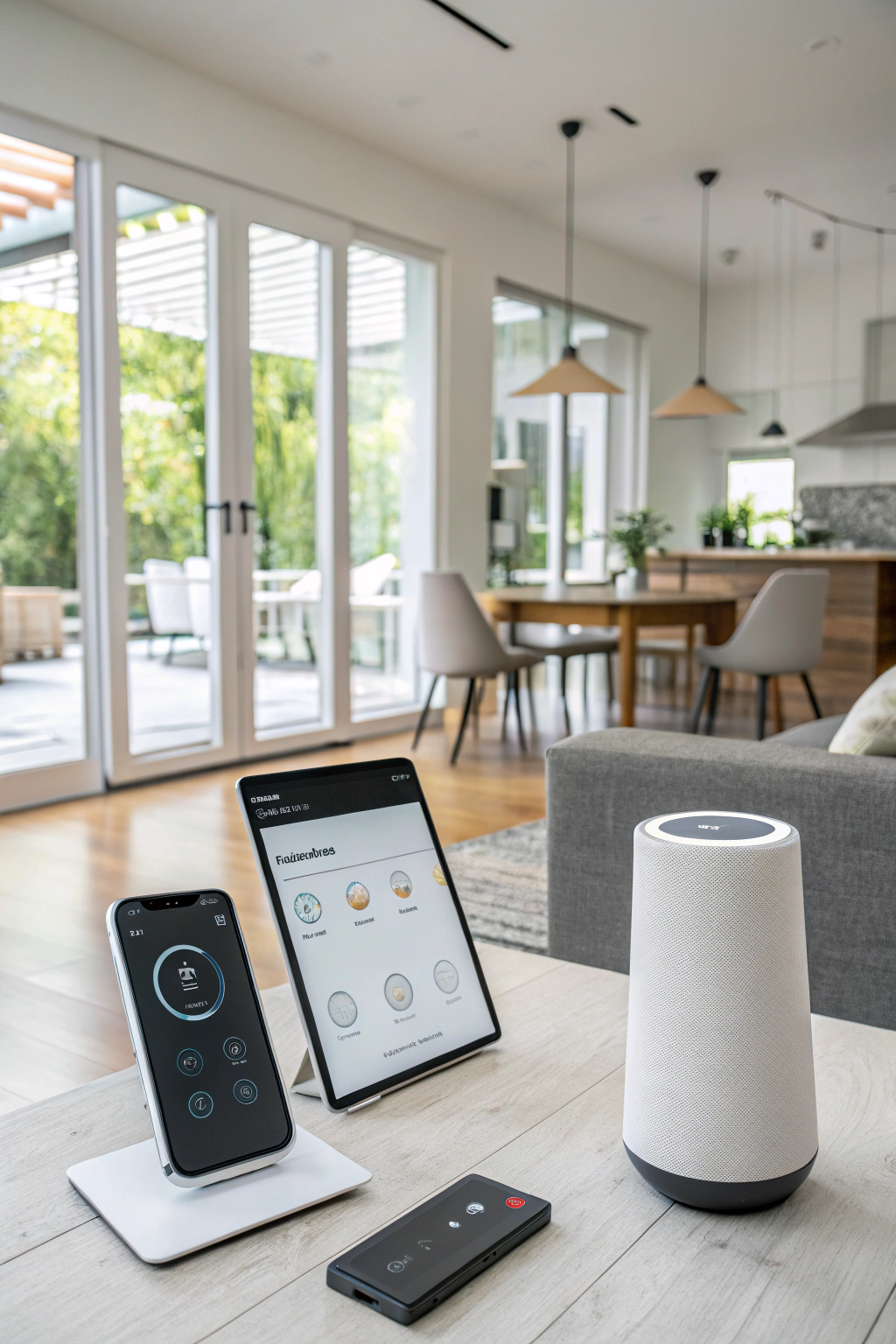Introduction
Imagine a home that not only anticipates your needs but actively shapes your environment for optimal comfort, productivity, and well-being. This isn’t science fiction; it’s the dawn of the intelligent habitat. Welcome to the world of XR Homes: How AI Creates Smart Living Spaces, a revolutionary convergence of Extended Reality (XR) and Artificial Intelligence (AI) that is fundamentally redefining our relationship with our homes. Forget smart speakers that just play music; we’re talking about environments that learn, adapt, and interact with you in seamless, intuitive ways, turning static walls into dynamic, responsive canvases for life.
Background and Evolution of XR Homes: How AI Creates Smart Living Spaces
The concept of a « smart home » has been evolving for decades, from early automation systems in the 1970s to the IoT-connected devices of today. Initially, these systems were rigid, rule-based, and often clunky. The real leap forward began with the integration of AI, allowing devices to learn from user behavior. Now, with the addition of XR (which includes Virtual, Augmented, and Mixed Reality), we are moving beyond simple automation. XR provides the spatial context and interactive layer, while AI offers the predictive intelligence. This powerful combination transforms a home from a collection of smart gadgets into a cohesive, intelligent ecosystem. The journey from automated houses to truly cognitive homes mirrors the broader trend of ambient computing, where technology seamlessly integrates into our environment, as pioneers in the field have noted.
Practical Applications of XR Homes: How AI Creates Smart Living Spaces
Use Case 1: Dynamic Interior Design and Spatial Optimization
One of the most exciting applications is in dynamic interior design. Using AR overlays, an AI can project different furniture layouts, color schemes, and art directly onto your walls and floors. It can analyze your daily routines—where you work, relax, or exercise—and suggest spatial configurations that maximize flow and functionality. For instance, the AI could notice you practice yoga in the living room every morning and automatically dim the lights, clear a virtual space, and project a calming, virtual nature scene onto a wall, enhancing your experience without you lifting a finger.
Use Case 2: Proactive Health and Wellness Monitoring
XR homes can serve as personalized wellness sanctuaries. AI-powered sensors, discreetly integrated into the home, can monitor vitals like heart rate, sleep patterns, and even posture. Combined with XR, the system can provide real-time feedback. Imagine your AR glasses gently suggesting a posture correction as you work at your desk or your smart mirror analyzing your skin and recommending a specific skincare routine. In the kitchen, the AI could project recipes onto your countertop, highlighting ingredients and guiding you through cooking steps, tailored to your dietary needs and health goals.
Use Case 3: Enhanced Home Security and Situational Awareness
Traditional security systems are reactive. The new paradigm of XR Homes: How AI Creates Smart Living Spaces is proactive. The AI can learn the normal patterns of movement and sound within your home. If it detects an anomaly—a window opening at an unusual time or an unrecognized heat signature—it can instantly alert you via an AR notification on your glasses, showing you exactly where the anomaly is on a holographic map of your home. You could then use XR to « teleport » to that location via a security camera feed, assess the situation, and take action, all without being physically present.
Challenges and Ethical Considerations
Despite the immense potential, the path to mainstream adoption is fraught with challenges. Privacy is the paramount concern. An XR home collects an unprecedented amount of personal data, from biometric information to daily habits. Ensuring this data is secure, anonymized, and used ethically is critical. Furthermore, AI bias could lead to systems that don’t work equally well for everyone, potentially reinforcing societal inequalities. There’s also the risk of over-reliance and the psychological impact of living in a constantly monitored and algorithmically-managed environment. Establishing clear regulatory frameworks and industry standards for data governance and user consent will be essential to building trust.
What’s Next for XR Homes: How AI Creates Smart Living Spaces?
In the short term, we’ll see more sophisticated integrations between existing smart home platforms and AR/VR headsets. Mid-term, expect startups to launch dedicated « cognitive home » operating systems that unify all devices under a single, intelligent AI. Companies are already exploring ambient AI that understands natural language and spatial commands without needing a wake word. Long-term, the home itself could become a generative platform. Imagine telling your house, « I want a quiet, focused workspace for the next two hours, » and the AI orchestrates lighting, sound, ambient temperature, and even digital wall art to create the perfect environment, transforming the very architecture of the room on demand.
How to Get Involved
Diving into the world of intelligent environments doesn’t require a complete home overhaul. Start by exploring AI-driven smart home hubs like Home Assistant or experimenting with AR interior design apps. For a deeper understanding of how these technologies intersect and to stay updated on the latest trends, explore the resources available at our hub. Joining online communities on platforms like Reddit or Discord dedicated to home automation and XR can also provide invaluable insights and project ideas from fellow enthusiasts.
Debunking Common Myths
Myth 1: XR Homes are just for tech billionaires. False. While high-end systems are expensive, many core principles can be implemented affordably. AI-powered routines can be set up with existing smart speakers, and AR apps for home design are often free.
Myth 2: You need to be a programmer to set it up. Not anymore. Modern platforms are increasingly user-friendly, with drag-and-drop interfaces and AI-assisted setup that guides you through the process, making complex automation accessible to non-technical users.
Myth 3: The technology is intrusive and will take over. The goal of good design in XR Homes: How AI Creates Smart Living Spaces is ambient intelligence—technology that disappears into the background. You are always in control, defining the level of automation and interaction you’re comfortable with.
Top Tools & Resources for XR Homes: How AI Creates Smart Living Spaces
- Home Assistant: An open-source home automation platform that puts local control and privacy first. It integrates with thousands of devices and allows for powerful, customized AI-driven automations.
- Apple Vision Pro & Meta Quest 3: These headsets are the gateways to experiencing spatial computing within your home. They are essential for visualizing the AR and MR layers that will define future XR homes.
- NVIDIA Omniverse: A platform for developing 3D workflows and virtual worlds. It’s a key tool for professionals looking to design and simulate the complex digital twins required for advanced XR home environments.

Conclusion
The fusion of XR and AI isn’t just about adding new gadgets to our homes; it’s about fundamentally rethinking what a home can be. From a static shelter, it is transforming into a dynamic, intelligent partner that enhances our lives in countless ways. These intelligent habitats promise a future of greater comfort, efficiency, and well-being. The journey is just beginning, and the possibilities are as limitless as our imagination. 🔗 Discover more futuristic insights on our Pinterest!
FAQ
What is XR Homes: How AI Creates Smart Living Spaces and why is it important?
It refers to the integration of Extended Reality (XR) and Artificial Intelligence (AI) to create adaptive, interactive, and intelligent home environments. It’s important because it moves beyond basic automation to offer personalized, predictive, and context-aware living experiences that can improve wellness, productivity, and security.
How can I start using XR Homes: How AI Creates Smart Living Spaces today?
You can start small. Begin by automating routines with a smart home hub like Home Assistant or Google Home. Use AR apps on your smartphone to visualize furniture placement. The key is to think about how AI can connect different devices to automate tasks based on your actual behavior and needs.
Where can I learn more?
Credible tech news sites like Wired, The Verge, and MIT Technology Review are excellent sources. Online communities such as the r/homeautomation subreddit and specialized tech blogs provide practical advice, tutorials, and discussions on the latest trends and tools in the space.
